Omega Debuts Two Chronographs With Watchmaker’s Most Complex Movement
The Co-Axial Master Chronometer Calibre 1932 received 13 patents for its groundbreaking design.
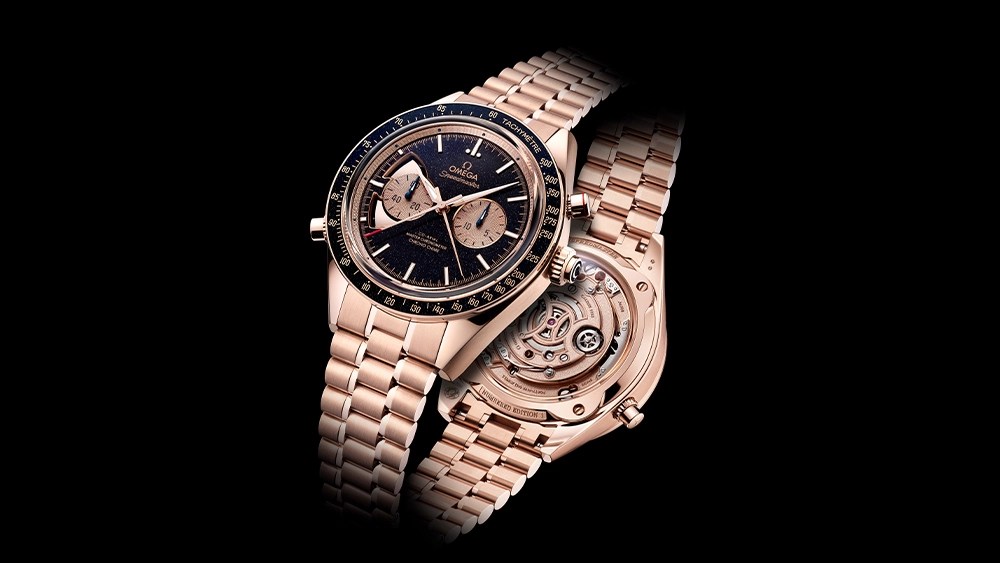
Just when it seems impossible to push the boundaries of precision and craft any further, it seems the watch world’s titans step up in new and ever-more impressive ways.
Leave it to Omega to fill the void with an entirely new movement found in two stunning watches that offer as much precision behind the scenes as they do style on the surface.
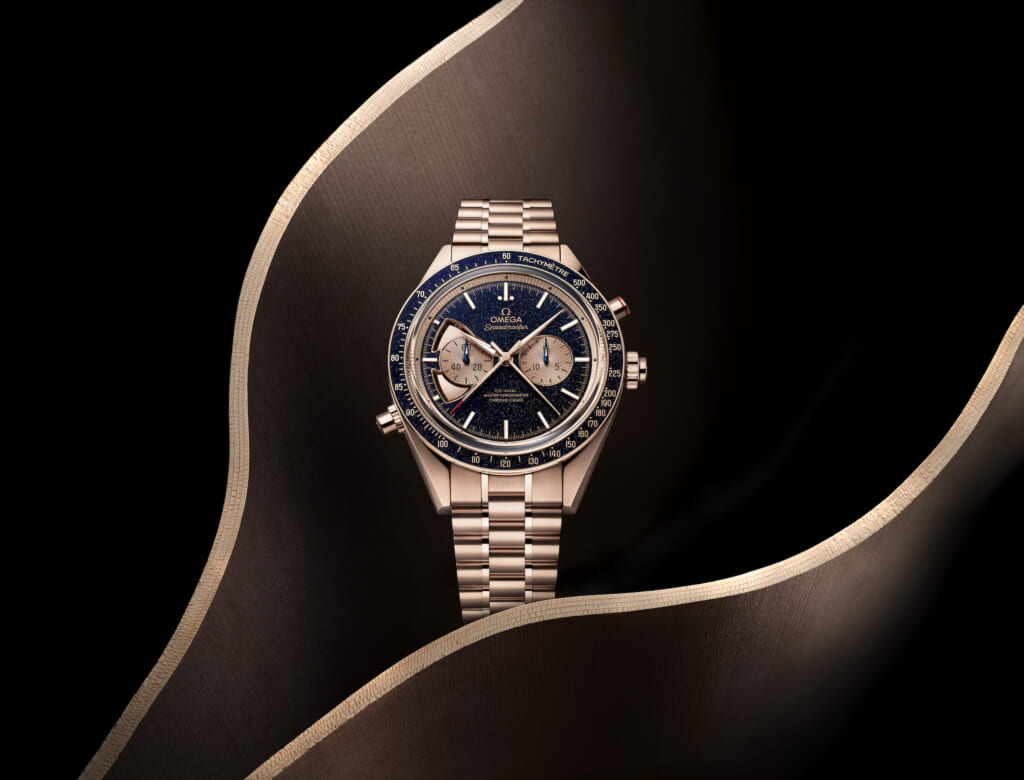
The new frontier is the Co-Axial Master Chronometer Calibre 1932 movement, an entirely new movement developed by the Swiss watchmaker that’s now found in both the modern Speedmaster Chrono Chime and the old-world Olympic 1932 Chrono Chime.
The Speedmaster Chrono Chime is familiar and yet nuanced in its differences, including a special case designed to house the one-of-a-kind movement.
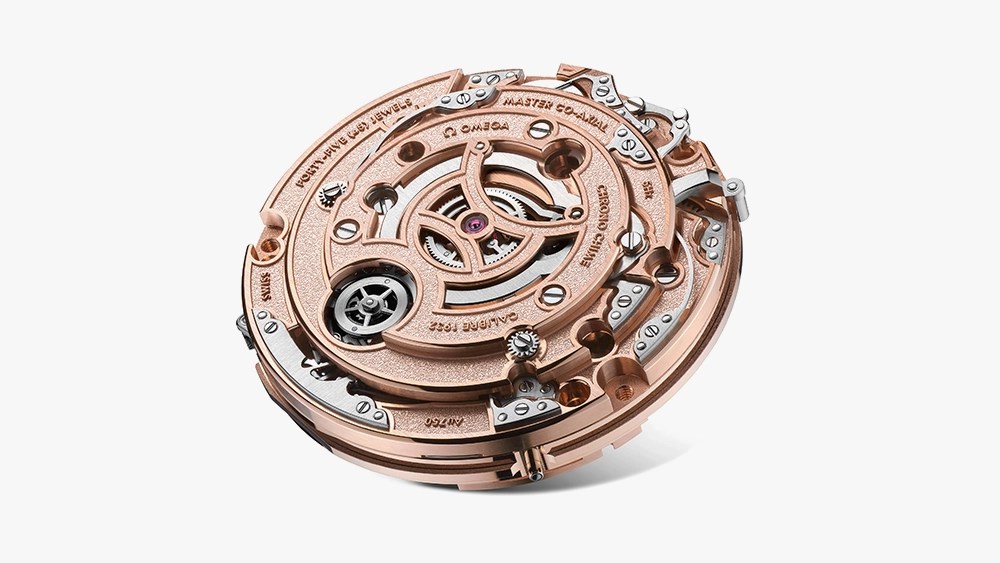
The movement exemplifies the boundary-pushing nature of Omega.
The Co-Axial Master Chronometer Calibre 1932 is based upon split-seconds chronographs used to time the 1932 Los Angeles Olympics, but that’s not only its only link to exceptional precision.
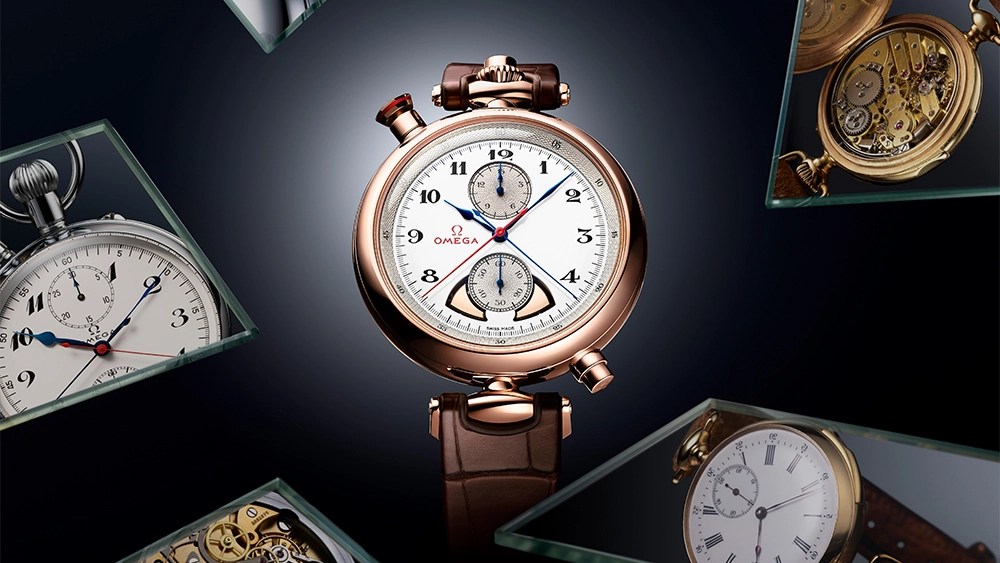
The movement also incorporates technology found in minute-repeater movements, which audibly chime the time.
In essence, it’s two movements built into one new movement designed from the ground up — and it can be found in two luxurious watches designed to suit different stylistic tastes (and watch collections, no less).
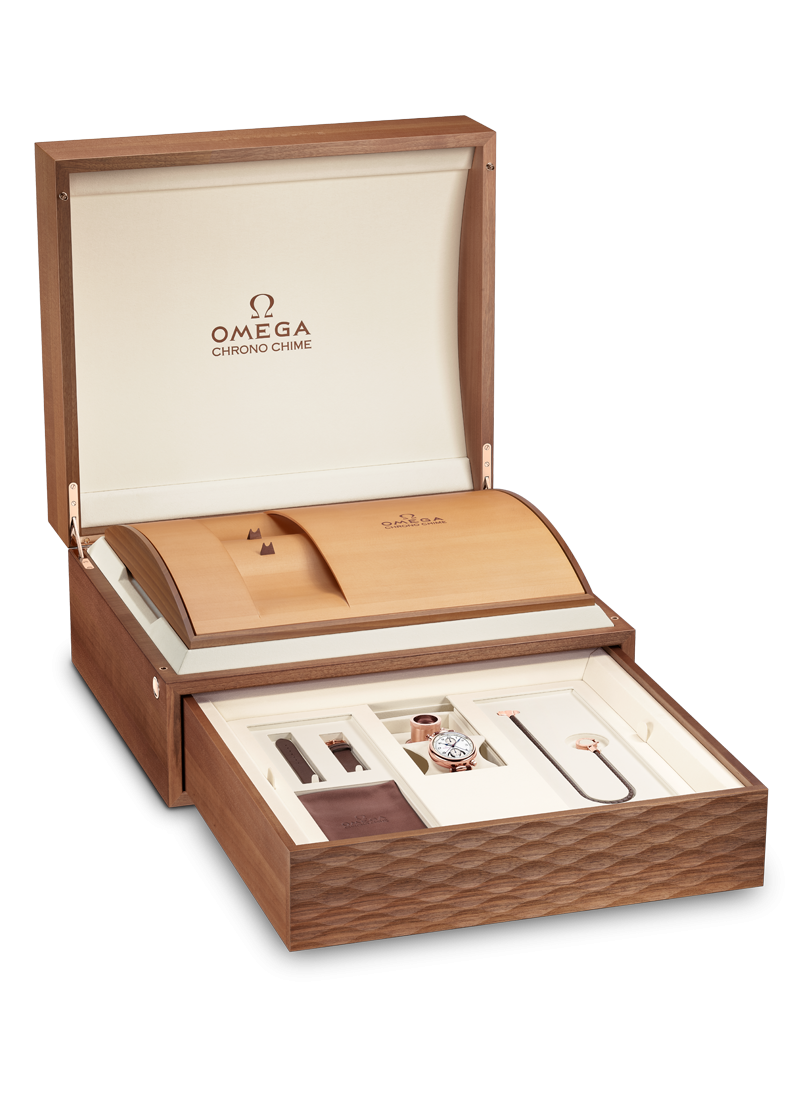
The Olympic Chrono Chime is an Art Deco masterpiece with its own chime pusher at 5’o-clock and details like a throwback-inspired Omega logo — it’s finished off with a walnut presentation box and leather cords that remarkably let the wearer don it as a pocket watch.
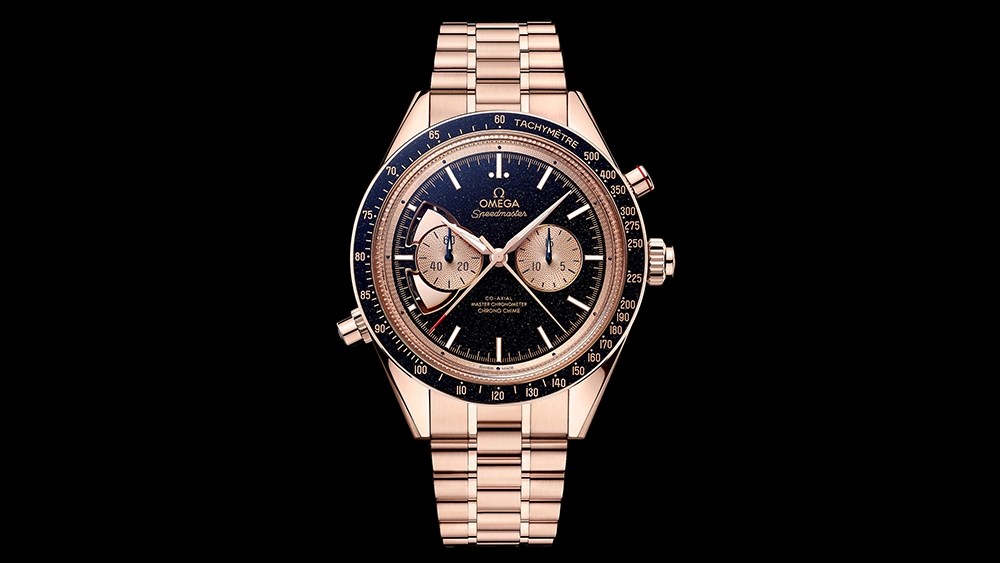
The Speedmaster Chrono Chime, on the other hand, uses a bold yet timeless 45 mm 18-karat Sedna Gold case to house the extremely intricate movement.
To top things off, each watch will likely be exceedingly rare, to the tune of around five movements produced per year. Ask for the price upon request at your own peril, or much more likely, simply marvel at a new horizon in horology.
